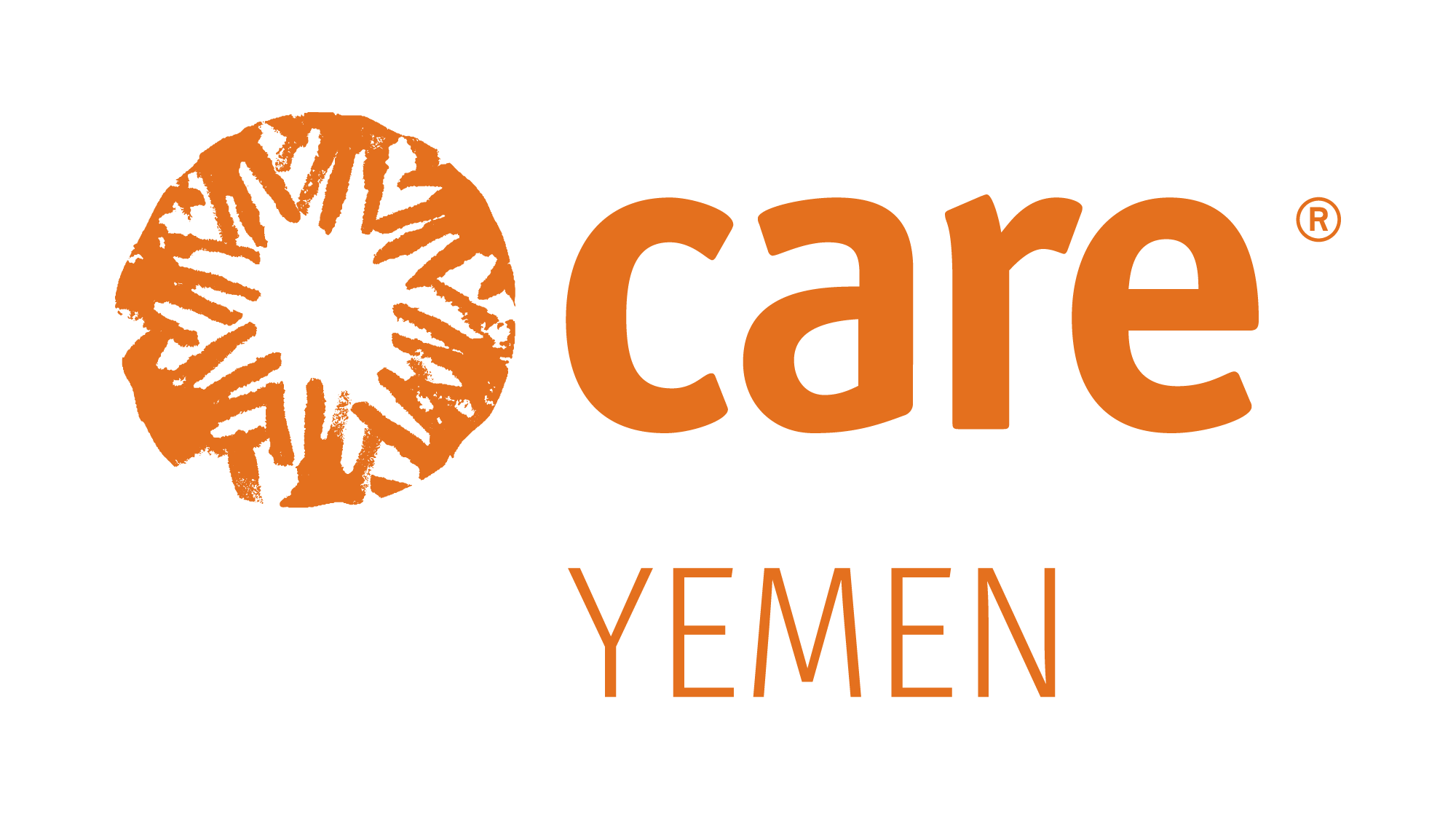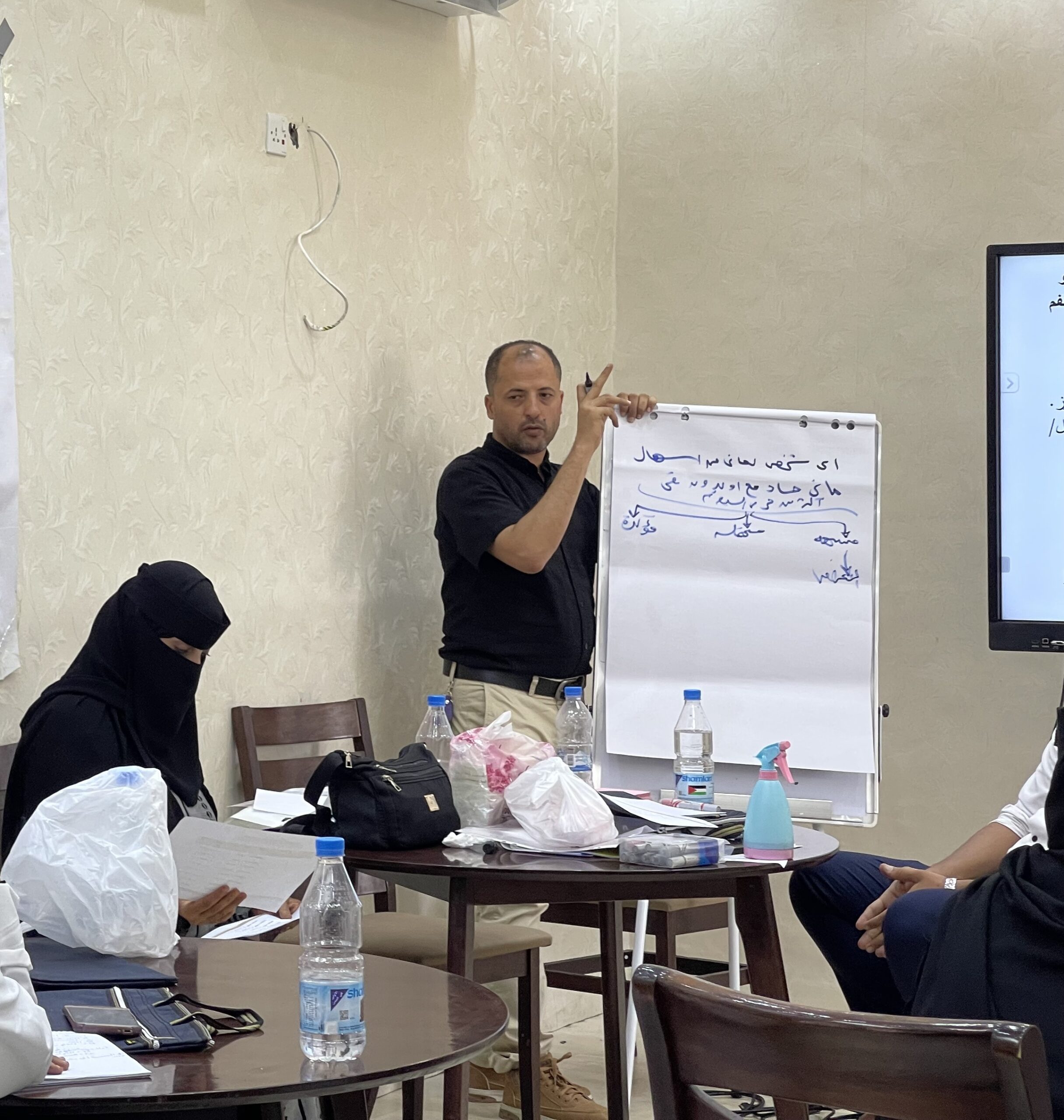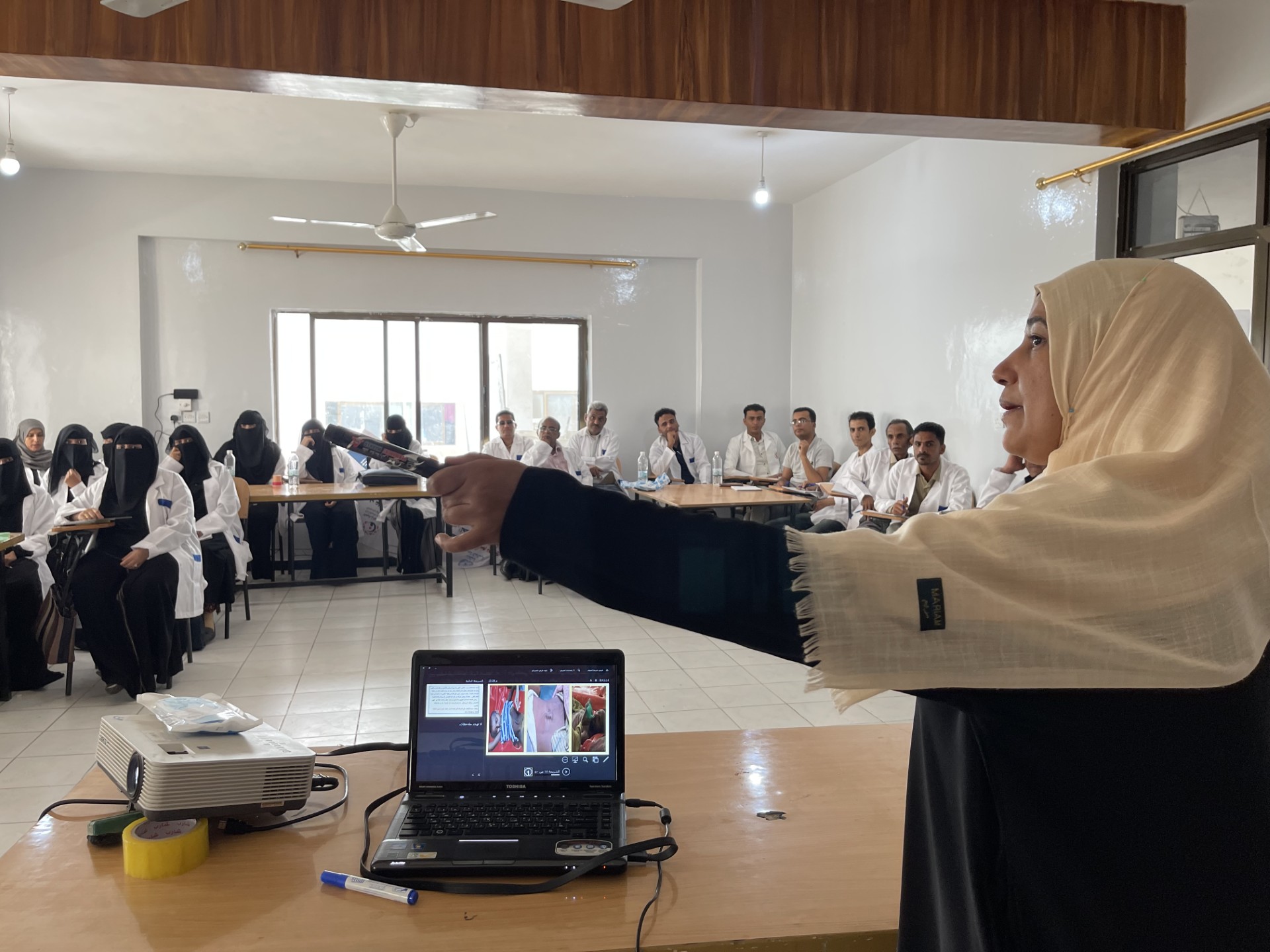The healthcare and displacement impact of natural disasters in Taiz are exacerbated by failing water, sanitation and hygiene (WASH) services, especially during flooding. Torrents and floods cause the spread of epidemics due to the accumulation of stagnant water and its mixing with garbage, which causes the spread of cholera and dengue fever.
Yassen, 37 years old, is responsible for the epidemiological surveillance of the Health Office in Taiz Governorate. “Taiz has always suffered from the spread of epidemics, and with the continuation of the conflict, the weakness of epidemiological surveillance services, and floods, the suffering of the residents has worsened. Before the war, the health situation in the city was better, but because of the war, the infrastructure was destroyed, including the health system. We were able to confront epidemics prior to the conflict because we had the necessary tools, and we were constantly educating society, but due to the conflict, we no longer possess sufficient equipment,” says Yassen.
As of the first week of August 2024, thousands of families were affected by severe flooding in Taiz Governorate. Most recently, on 2 August, severe flooding hit Maqbanah. Heavy rains and severe flooding are ongoing, and more affected people are at risk. Continuous rainfall causes sewage to flow into the lanes, increasing the risk of epidemics spreading. “The main reason for the spread of dengue fever is the accumulation of rainwater, which causes the spread of mosquitoes that spread dengue epidemic very fast. Due to the lack of coordination with the rest of the local authorities, we weren’t able to adequately confront these epidemics, and this is what causes an increase in the number of deaths due to dengue fever in the city,” says Yassen
To improve preparedness against disasters, CARE, with funding from the European Union, strengthened existing governmental and community-based systems as well as grassroot disaster preparedness and response structures, created institutional links, advocated for contingency planning, and built the capacity of local authorities. Such efforts are key to creating structural changes to deal with disasters that enable government and communities to take ownership of systems, thus ensuring sustainable changes.
As part of these activities CARE developed an inclusive disaster preparedness plan, which was based on a series of needs assessments and disaster risk assessments, to motivate community participation. The plan also included development of standard operating procedures (SoPs) that are aimed to enhance internal coordination among local authority offices and encourage partners to share data as well as spread awareness on disaster preparedness. These efforts seek to build a more resilient community capable of effectively responding to and recovering from disaster.
“CARE conducted a workshop to create a mechanism for confronting disasters and epidemics led by Taiz governor and now we no longer need to face the epidemics all by ourselves. We can now respond in coordination with other local authorities,” says Yassen. CARE also supported surveillance workers with incentives and trained 60 health workers in treatment methods when facing epidemics and diseases. In addition, CARE supported the epidemiological surveillance office with equipment and laptops to enable them to release monthly reports on the number of people infected with potential epidemics in the governorate.
CARE also convened a meeting for community leaders in the targeted districts, educating them about epidemics and methods of transmission. “With this project, we cooperated with the Hygiene Fund and filled the potholes where water accumulated. This was done with the participation of the community members, after the leaders of the community also educated the residents about the epidemic through their social platforms, mosques, and other means,” says Yassen.



